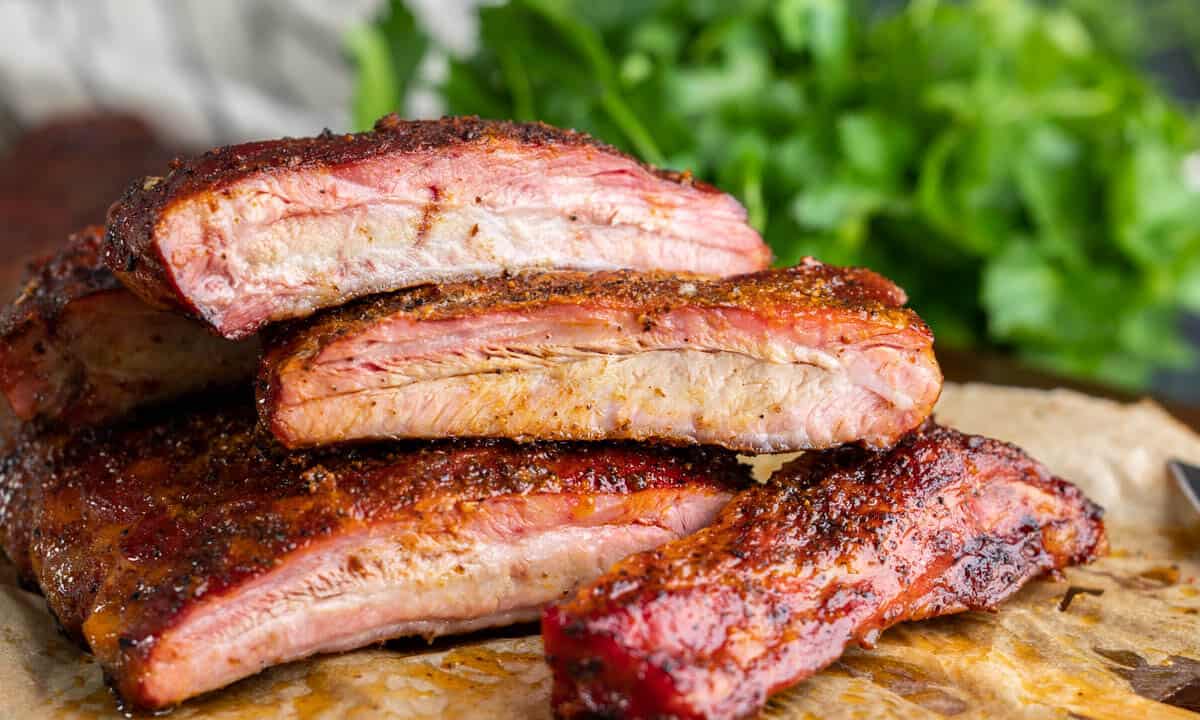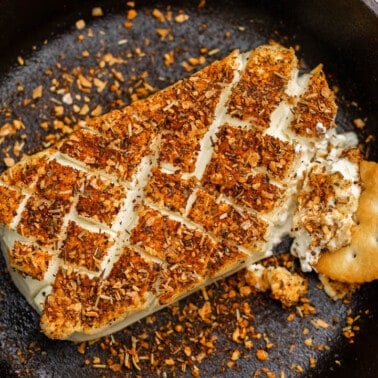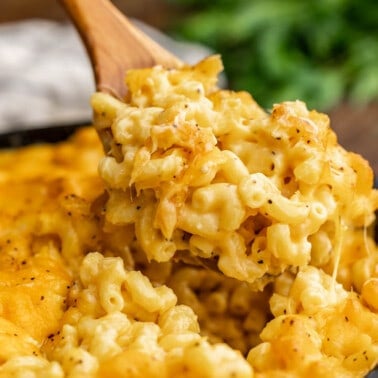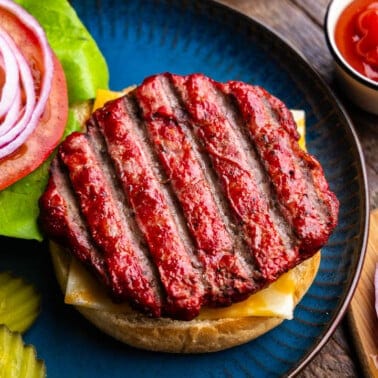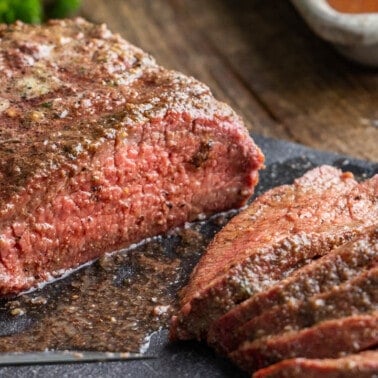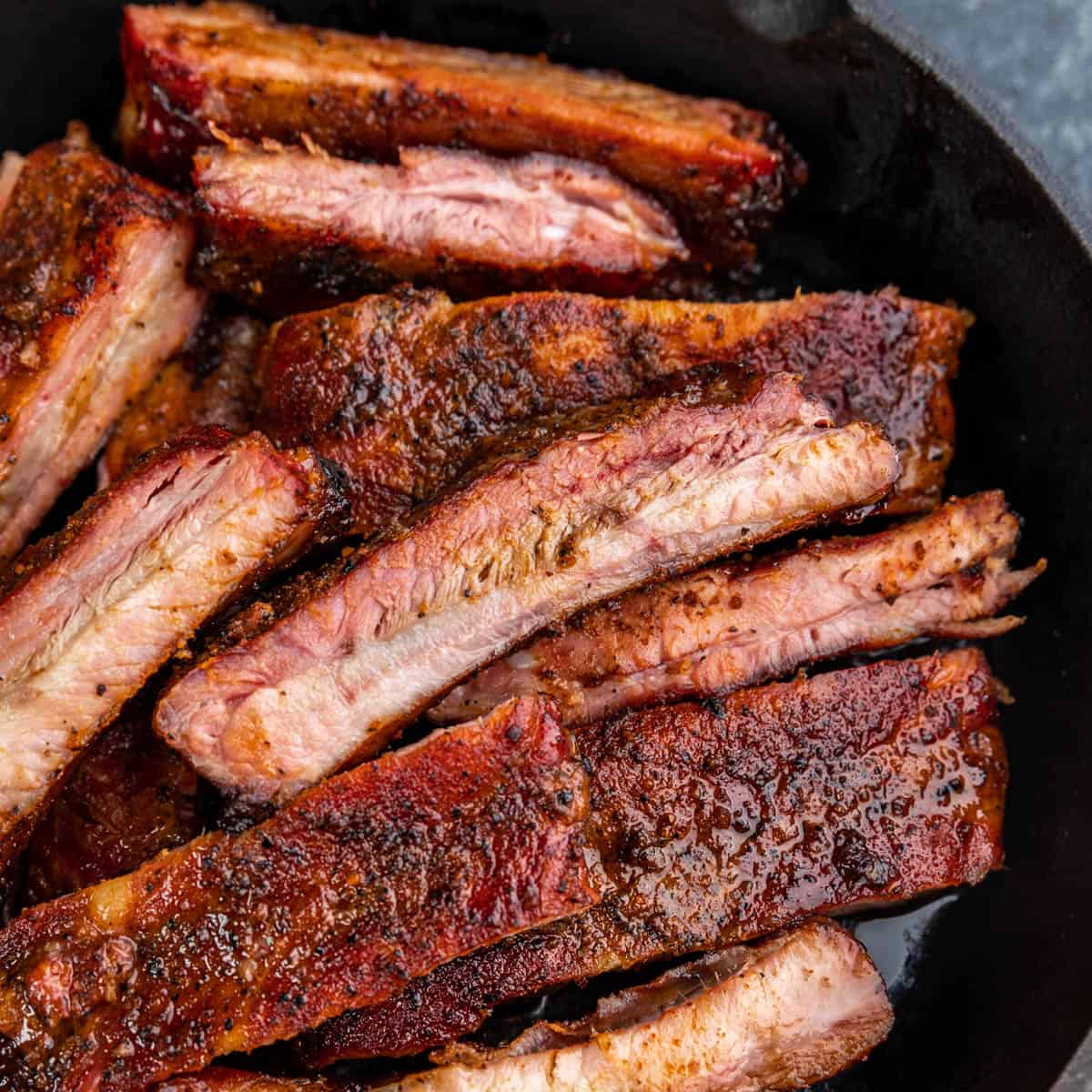Smoked ribs are a barbecue classic, and we promise you don’t need to be a pitmaster to make them at home. With just a simple rub, a mustard binder, and plenty of low-and-slow cooking time, you can get juicy, tender ribs that are full of smoky flavor. A quick spritz every hour keeps them moist and helps develop that perfect bark.
Make it a backyard barbecue classic with a side of macaroni salad and watermelon.

Why Our Recipe
- An easy approach to slow-smoked ribs that turn out juicy, tender, and flavorful, even if you’re just starting out.
- Simple seasoning rub with a mustard binder to help it stick and build flavor.
- Spritzed with apple juice and vinegar for the perfect bark, served with or without barbecue sauce.
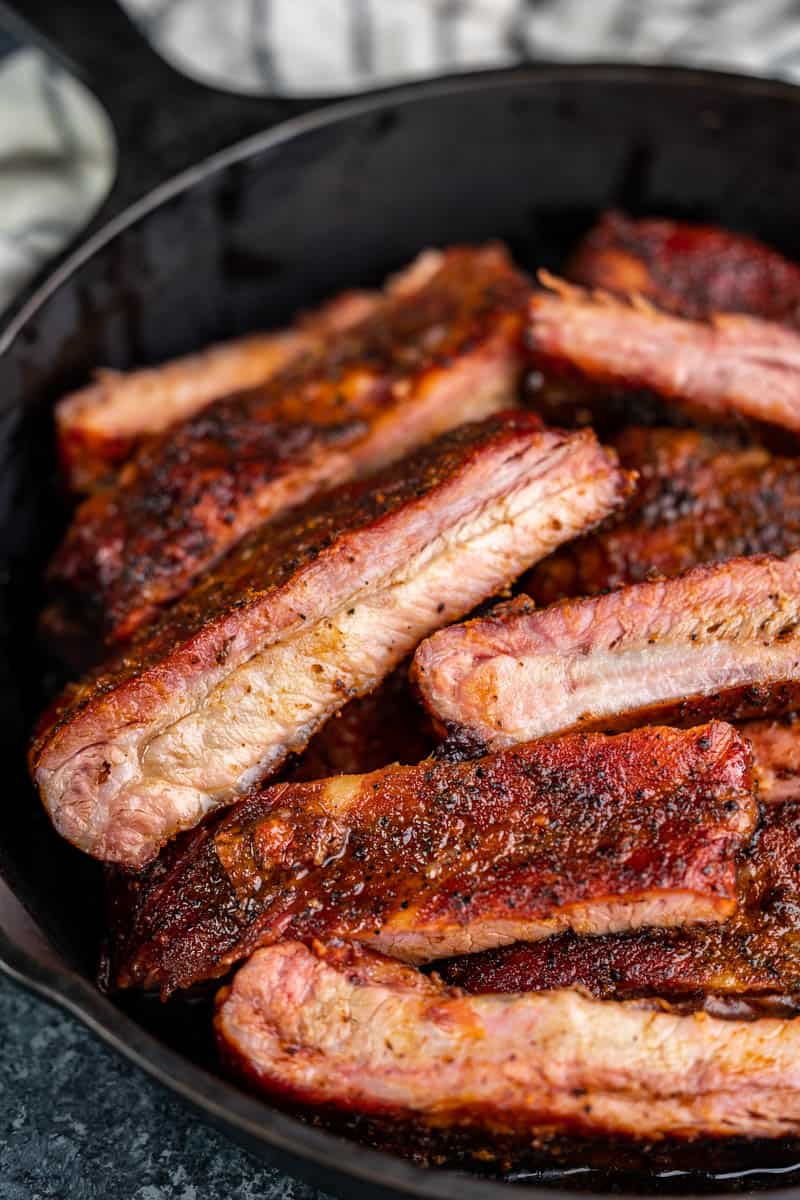
Whether you like baby back, spareribs, or St. Louis-style, this recipe will guide you through the whole process. This recipe works for all of them. We’ll show you how to season, smoke, spritz, and sauce (if you want!) so you end up with ribs that look and taste like they came from a professional smoker. Plus, we’ve included pellet recommendations and tips for getting that signature smoky crust.
Ingredient Notes
- Pork Ribs: Baby back, spareribs, or St. Louis-style ribs all work with this recipe. Baby backs are a little leaner and cook a bit faster. Spareribs and St. Louis-style have more fat and meat, which can make them extra juicy and flavorful.
- Whole Grain Mustard: Acts as a binder to help the rub stick and adds a slight tang to the flavor. You can also use yellow mustard or Dijon if you prefer.
- Smoked Paprika: Adds a rich smoky flavor and beautiful color to the ribs.
- Salt: Regular table salt works great. If using kosher salt, increase to about 1 tablespoon.
- Black Pepper: Freshly ground will give the best flavor, but pre-ground is fine too.
- Garlic Powder: Brings a nice savory, mellow garlic flavor without burning during the long cook.
- Barbecue Sauce (Optional): Use your favorite bottled sauce or make your own. Adding sauce during the last hour caramelizes it into a sticky glaze.
- Apple Juice & Apple Cider Vinegar: Mixed together to spritz the ribs. This keeps them moist and helps develop a flavorful bark.
Rib Options
This recipe and method works with all three of your main pork rib options. Use whichever one you prefer (or whichever is on sale!)
Baby Back Ribs: These are the smaller, leaner ribs that cook up a little faster. They’re super tender and a great choice if you don’t want a lot of extra fat.
Spare Ribs: Bigger, meatier, and a bit fattier. That extra fat means more flavor and extra juicy ribs once they’re done.
St. Louis-Style Ribs: Basically spare ribs but trimmed into a nice rectangle so they cook evenly and are easier to handle. You get that same big flavor but a cleaner look and feel.
Pellet Recommendations
When it comes to which woods you want to use for ribs, you’ve got options. And they all taste great!
Apple or Cherry Pellets: Mild, sweet, and a little fruity. These give you great smoky flavor without taking over the pork.
Hickory Pellets: Go-to for that bold, classic barbecue flavor. A little heavier smoke, but perfect if you like a stronger bite.
Mix It Up: We love combining hickory and cherry. You get that bold smoke with a little sweetness and a pretty reddish color on the ribs.
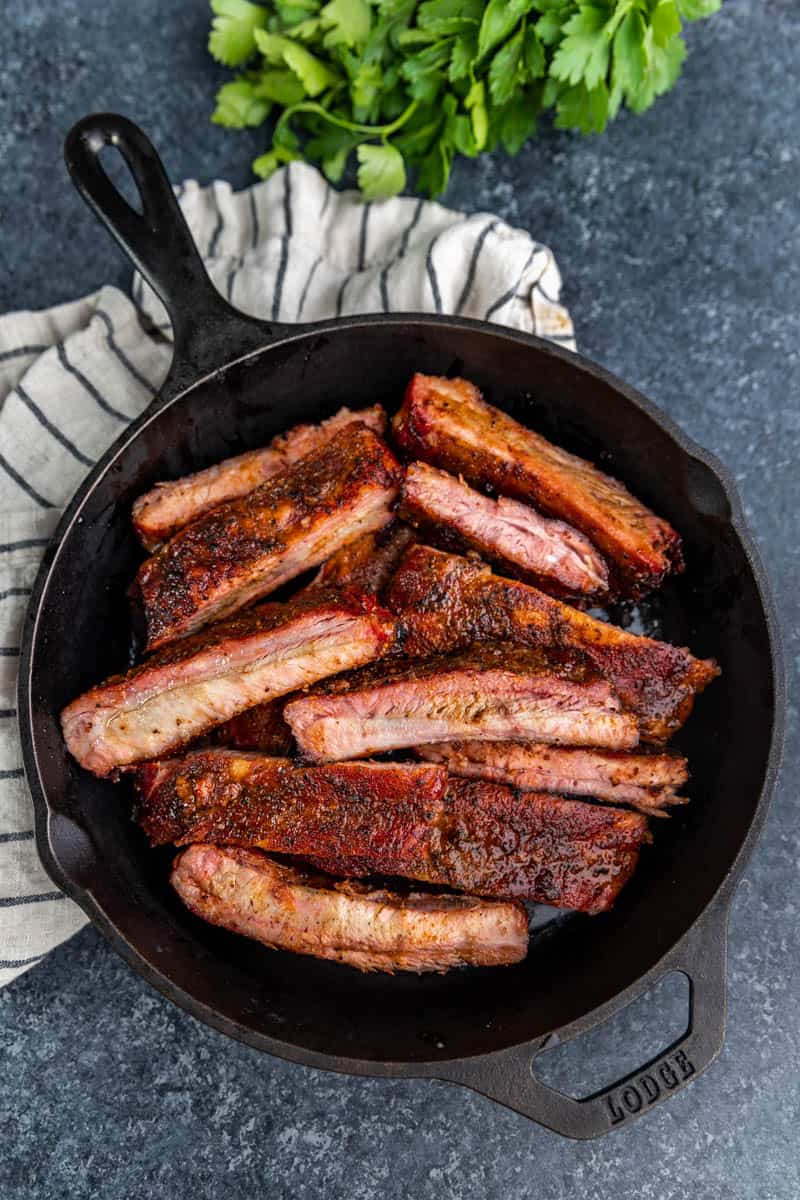
Why Spritz?
Spritzing keeps the outside of the ribs from drying out. That gives the rub more time to soak up smoky goodness before it turns into a crust.
Plus, that apple juice and vinegar combo adds a little flavor and helps you get that beautiful bark and even a smoke ring. It’s not just for show. It really does make a difference.
How to Know When Ribs are Done
Here’s the truth: ribs are done when they feel done. You want them to bend easily when you lift them up with tongs, and the meat should pull back from the bones a bit.
If you like numbers, look for an internal temp somewhere between 195°F and 203°F. But trust your eyes and hands just as much as your thermometer. Every rack is a little different.
To Sauce, or Not to Sauce
Totally your call! If you love sticky ribs, slather on your favorite barbecue sauce during the last hour so it caramelizes without burning.
If you’re more into dry ribs (so you can really taste that rub and smoke), skip the sauce. Either way, they’re going to be delicious.
Storage & Reheating Instructions
Refrigerate any leftover ribs in an airtight container for up to 4 days.
To Reheat in the Oven: Place the ribs in a baking dish and add a small amount of apple juice to help keep them moist. Cover the dish with foil and warm at 300°F for about 15 to 20 minutes, or until heated through. Keep an eye on them so they don’t dry out.
